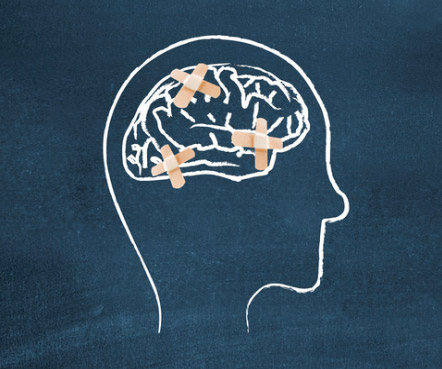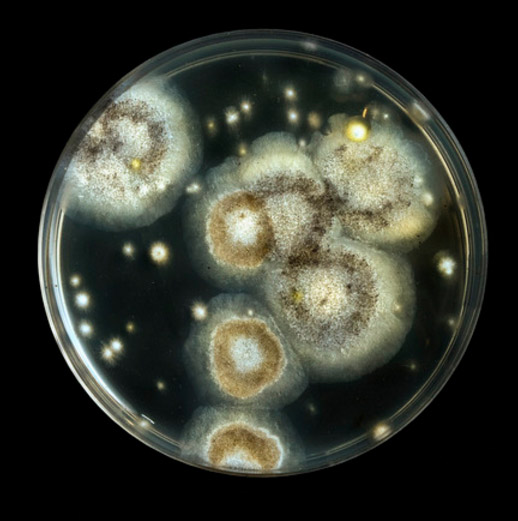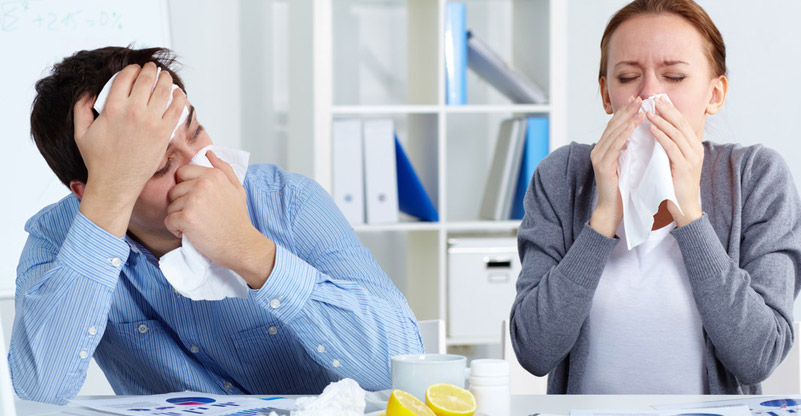The Short Answer:
Table of Contents
- Both sides of the Toxic Black Mold Argument
- Possible Health Issues Associated with Black Mold Exposure
- Toxic Black Mold and Public Opinion
- An Unregulated Industry
- So, Can Black Mold Make You Sick?
- The Difference Between Toxic Black Mold and Common Mold
- Mycotoxins
- Identifying Black Mold in the Home
- What to Do if you Discover Black Mold?
- Frequently Asked Questions Relating to Black Mold and your Health
There is a genuine concern in the community about the health effects of black mold, but little in the way of separating fact from fiction. Just how dangerous is Black Mold? Can Black Mold make you sick? and if so just how serious of a concern is it. In the article below we’ll take a closer look and present the facts so you can make up your own mind.
Both sides of the Toxic Black Mold Argument
Such is the effect Black Mold (or its scientific name Stachybotrys Chartarum, also known as Stachybotrys Atra) has on us that it’s even been the subject of several horror movies. But is this the real story, is it a silent killer lurking in our homes?
Public opinion is very much divided on just how serious a threat to our health black mold really is. The problem and resulting confusion are due in part to the strong opinions seen on both sides of the ‘Toxic Black Mold’ argument.
One thing most people will agree on, however, is that Toxic Black Mold has become one of the biggest health controversies since Asbestos in the 1980’s .
Those who have spoken out about the supposed ‘myth’ of toxic mold include health professionals and scientists who are skeptical of severe heath concerns such as neurological damage and immune deficiency due to mold allergy. This is also the position of the Centers for Disease Control and Prevention (CDC) as seen here: http://www.cdc.gov/mold/stachy.htm . Some go as far as to claim the entire debate is founded on scaremongering as a result of aggressive lawyers spawning (no pun intended) an entirely new industry known as mold litigation.
On the other side of the coin, there are certainly compelling cases that show serious health problems suffered by many occupants who have lived in mold affected homes. This isn’t just speculative – lawsuits have been filed and won with massive compensation being paid out (more on this later). Governments have also taken the matter seriously, with California even passing a Toxic Mold Protection Act that sets limits for mold exposure. However, with no enforcing of the act, a case can be made for it making little difference in a practical sense.
Possible Health Issues Associated with Black Mold Exposure
While it is mostly undisputed that mold exposure can cause respiratory and cold/flu-like symptoms in some people, the more severe claims that are heavily debated regarding Black Mold include:
-
 Loss of memory and associated neurological complications including:
Loss of memory and associated neurological complications including:
- Impaired reflexes
- Depression
- Anxiety
-
Problems with circulation including:
- Low blood pressure and heart disease
- Immune deficiency (Immunosuppression)
-
Respiratory issues including:
- Pulmonary hemorrhage – (bleeding of the lungs)
- Pulmonary edema – (inflammation of the lungs)
- And more including Cancer.
It’s hardly surprising given the strong opinions on either side that the general public is confused and, as in most cases when confusion reigns, the truth becomes the first casualty.
Toxic Black Mold and Public Opinion
So what put Toxic Black Mold on our radars? After all hasn’t mold been around since the dawn of time? Isn’t it in the air all around us?
You may have heard the term ‘ Mold is Gold ‘. That’s because Mold (particularly Toxic Black Mold) lawsuits are big business these days. There have been a number of historic court cases won against insurance companies through the years, claiming damages both to property and health due to mold exposure.
Let’s take a look at some of the more historically memorable cases.
Ed McMahon
 Perhaps the best-known mold litigation tale of all is that of
Ed McMahon the American comedian
and former announcer for Johnny Carson.
Perhaps the best-known mold litigation tale of all is that of
Ed McMahon the American comedian
and former announcer for Johnny Carson.
Being a public figure the case was highly publicized. McMahon sued for approx. $20 million after claiming his dog had been killed and his health and that of his wife had been adversely affected. McMahon eventually settled for $7.2 million, but it’s fair to say that public opinion was divided regarding the validity of the case.
Judy Ballard (Ballard v. Fire Insurance Exchange)
Another landmark case and one of the first major mold-related lawsuits that paved the way for future litigation was Ballard v. Fire Insurance Exchange .
The Ballard family received compensation of approx. $32 million (later reduced to $8.2 million on appeal). Much of the claim related to the insurer being slow to act resulting in further damage and alleged serious health concerns affecting the Ballard family. The health claims included the inability to work due to memory loss and respiratory issues including serious symptoms such as coughing up blood.
Gorman vs. Crenshaw
The following year after the landmark Ballard V Fire Insurance Exchange court case, another large claim was filed against the Crenshaw Lumber Co. Inc.
The Gorman family claimed that timber supplied by Crenshaw Lumber (the timber they were building part of their home with) contained mold which was actively growing on it. The following year (2000) the Gormans’ son was born, by 2005 the child suffered brain damage and was unable to talk.
In recent times, the mysterious death of film star Brittany Murphy has been also been linked (albeit rather weakly) to Mold Exposure . With the star’s mother at one stage claiming she believed the death of both her daughter and husband (Simon Monjack) were the result of toxic mold exposure.
While on the surface it may seem that with massive lawsuits going the way of the prosecution it would be widely accepted that black mold can make you sick, however, this isn’t the case. While the law of probability would suggest mold can seriously affect some people’s health, there is insufficient evidence to claim either argument as fact.
An Unregulated Industry
When it comes to health related concerns and mold It’s also important to remember that the mold remediation industry isn’t regulated. There is no governing body and no standard certification. That isn’t to say the industry is overrun by inexperienced operators, but it does make it easy for anyone to work in the mold remediation industry. There have been countless stories of extensive mold remediation services being carried out that were either not needed or were excessive, to say the least.
On the other hand, there have been plenty of highly successful mold remediation operations carried out by reliable and experienced operators.
As with any service, it’s important that you do your homework and ensure you are dealing with a reputable remediation company. In fact, this is more important than ever when it comes to removing mold as there is the very real chance that should your mold issue not be rectified early it can end up becoming a major concern for both your health and structural integrity of your home.
So, Can Black Mold Make You Sick?
Confused? You’re not alone. With little in the way of scientific proof that black mold can cause serious health issues, but plenty of people claiming their health has been affected, the official word is more investigation is required. But this has been the case for several years now.
There are some valid reasons for this, as symptoms of mold sickness are very difficult to pinpoint due to only a percentage of people generally being effected and the manifestation of these symptoms being very different from person to person. There are also those who claim if proven it will open the floodgates even further for increased litigation. It’s a reasonable point, as mentioned mold has always been around but as we have become more aware of it, litigation has dramatically increased.
One could imagine a scenario where the floodgates are swung off their collective hinges if a link between toxic black mold and health concerns such as Cancer were ever proven beyond doubt.
The Difference Between Toxic Black Mold and Common Mold
 Molds are Fungi that grow in filaments (thread-like fibers), and these filaments are referred to as Hyphae. Mold unlike plants does not rely on the sun to grow (photosynthesis) and instead relies on the environment around it to prosper e.g. it consumes its surroundings. When it is disturbed, mold spores can be released into the air where they will most likely settle and remain unnoticed unless conditions (e.g. humidity and moisture) are present allowing it to grow (often quite rapidly) and spread to the extent that it becomes detectable to the human eye.
Molds are Fungi that grow in filaments (thread-like fibers), and these filaments are referred to as Hyphae. Mold unlike plants does not rely on the sun to grow (photosynthesis) and instead relies on the environment around it to prosper e.g. it consumes its surroundings. When it is disturbed, mold spores can be released into the air where they will most likely settle and remain unnoticed unless conditions (e.g. humidity and moisture) are present allowing it to grow (often quite rapidly) and spread to the extent that it becomes detectable to the human eye.
When it is disturbed, mold spores can be released into the air where they will most likely settle and remain unnoticed unless conditions (e.g. humidity and moisture) are present allowing it to grow (often quite rapidly) and spread to the extent that it becomes detectable to the human eye.
Black mold colonizes and flourishes in exactly the same way as most common molds with one important distinction. The spores Black Mold or Stachybotrys Chartarum produce can contain Mycotoxins, other molds may also but Black Mold contains a higher concentration.
In case, you were wondering, the word Myco means fungus. As a result, the word Mycotoxin refers to toxic fungi.
Toxic Fungi?
The term ‘Toxic Fungi’ isn’t an entirely accurate statement as no species of mold is indeed toxic. However, some molds can produce toxins. While this might seem like semantics it’s actually an important distinction and one that is often overlooked. The real danger with any type of mold as far as our health is concerned isn’t the mold itself – it is the spores that are released when the mold is disturbed. They can enter our lungs and land on the food we eat.
Mycotoxins
As the name suggests Mycotoxins are a toxin secreted by Fungi. In some cases e.g. Toadstools they can be particularly severe if ingested and may cause a range of severe symptoms including death! Mycotoxins secreted by mold, however, are less understood.
It is not known why mold produces Mycotoxins (e.g. they are not required by mold to develop) however, it may be a result of direct competition for their surrounding environment as Mycotoxins not only affect humans but can also affect other microorganisms such as bacteria and other types of fungi.
What is known however is that as mold colonizes and begins to flourish Mycotoxin levels increase and can present a health problem for those who are exposed. The extent of this depends on how vulnerable the person coming into contact with the Mycotoxins is e.g whether they have an existing respiratory condition, and of course the level and duration of the mold exposure.
It’s not just Black Mold that is capable of producing Mycotoxins, other types of mold such as Aspergillus and Penicillium can also produce Mycotoxins. However, Stachybotrys or Black Mold is believed to contain a much higher concentration of Mycotoxins, making it a more dangerous prospect.
Not all forms of Toxigenic mold will even produce toxins, however, and the level of toxicity by those that do can differ significantly. The reason for this is due in large part to the climate and surrounding environment the mold may have been found in and the effect it has on the person.
Identifying Black Mold in the Home
Considering there are estimated to be anywhere from 10, 000 to 300,000 different types of mold in existence, it is near impossible to identify without professional training. Regardless of what your opinion is on Toxic Black Mold, remember that just because you discover mold in your home which is black in appearance, it doesn’t mean it is Stachybotrys Chartarum (Black Mold).
Appearance

Toxic black mold often looks like something taken directly from a horror movie, with its insidious, slimy black appearance and random growth patterns. It is either black, dark gray or dark green in appearance. If its source of moisture is removed, it would take on a flakier gray, brittle appearance.
What to Do if you Discover Black Mold?
Firstly, you won’t know what type of mold it is just by looking at it, and in most cases, it won’t be Black Mold, however, you should have any mold infestation checked out by an expert. While you can remove mold yourself it is not recommended if the area is larger than 3ft X 3ft. An expert will be able to inform you of the full extent of the problem, including if you have mold inside your walls and other difficult to test areas.
Like most of us who have to put their trust in a mechanic to fix their car, in the case of mold you need to trust the company you deal with to give you precise information on the extent of the problem.
Regardless of what your thoughts are about Toxic Black Mold, all mold should be inspected and removed. It can spread rapidly and there are far too many cases where it appears to have made occupants of a home infested with Black Mold very sick. Most experts advocate being sensible when it comes to Black Mold and take a ‘worst case’ approach. While not scientifically proven, there is a strong basis to argue that Black Mold, under the right conditions, with the right amount of exposure can cause serious illness. This may be as yet unproven, but it’s very likely.
Frequently Asked Questions Relating to Black Mold and your Health

How fast can Black Mold spread and grow?
Anywhere from 24 to 48 hours depending on conditions, can take up to a week to be visibly detected.
Is Black Mold Deadly?
There are no confirmed cases where mold exposure has been proven to be a cause of death. However, it is widely accepted that it can be a cause of poor health.
Can I remove Toxic Black Mold Myself?
You can, but there are specific guidelines in place to advise on the best course of action. The
CDC recommend that if the area of infestation is larger than 3 ft X 3 ft then a professional should be called in
.
Do Dehumidifiers Work to reduce the Health Threat?
Mold needs relatively high humidity and a source of water to grow. Take away the moisture in the air, and its ability to thrive is reduced. Dehumidifiers work by reducing and stabilizing humidity creating a less than ideal environment for toxic mold.
Do Air Purifiers Work?
They can certainly help by removing mold spores from the air. There are some different types of air purifier, however, and not all work the same or are as effective.
Should I move my family out if I am having Black Mold removed from my home?
There’s no conclusive proof that mold can be seriously harmful, but it is also acknowledged that more research is required. You will be best advised by your remediation contractor, or local doctor if you are experiencing any symptoms of mold exposure.
Can I test for Mold without engaging a professional?
There are mold test kits that are widely available but in most cases we recommend speaking to a professional as there are significant risks associated with letting mold spread through your home unabated. A mold test kit however can be a good starting point provided you follow up with a professional.
